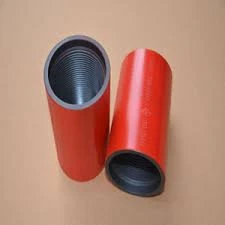- Afrikaans
- Albanian
- Amharic
- Arabic
- Armenian
- Azerbaijani
- Basque
- Belarusian
- Bengali
- Bosnian
- Bulgarian
- Catalan
- Cebuano
- Corsican
- Croatian
- Czech
- Danish
- Dutch
- English
- Esperanto
- Estonian
- Finnish
- French
- Frisian
- Galician
- Georgian
- German
- Greek
- Gujarati
- Haitian Creole
- hausa
- hawaiian
- Hebrew
- Hindi
- Miao
- Hungarian
- Icelandic
- igbo
- Indonesian
- irish
- Italian
- Japanese
- Javanese
- Kannada
- kazakh
- Khmer
- Rwandese
- Korean
- Kurdish
- Kyrgyz
- Lao
- Latin
- Latvian
- Lithuanian
- Luxembourgish
- Macedonian
- Malgashi
- Malay
- Malayalam
- Maltese
- Maori
- Marathi
- Mongolian
- Myanmar
- Nepali
- Norwegian
- Norwegian
- Occitan
- Pashto
- Persian
- Polish
- Portuguese
- Punjabi
- Romanian
- Russian
- Samoan
- Scottish Gaelic
- Serbian
- Sesotho
- Shona
- Sindhi
- Sinhala
- Slovak
- Slovenian
- Somali
- Spanish
- Sundanese
- Swahili
- Swedish
- Tagalog
- Tajik
- Tamil
- Tatar
- Telugu
- Thai
- Turkish
- Turkmen
- Ukrainian
- Urdu
- Uighur
- Uzbek
- Vietnamese
- Welsh
- Bantu
- Yiddish
- Yoruba
- Zulu
Exploring the Benefits and Applications of 3% Stainless Steel Couplings in Industrial Settings
Understanding 3% Stainless Steel Couplings Applications and Advantages
In industrial and mechanical applications, the integrity of connections is paramount. One critical component often utilized in various systems is the coupling, which enables the joining of two shafts, pipes, or tubes securely. Among the many types of couplings available, 3% stainless steel couplings have gained popularity due to their unique properties and advantages. This article explores what 3% stainless steel couplings are, their applications, and why they are considered an excellent choice in many industries.
What is 3% Stainless Steel?
Firstly, it is essential to understand what is meant by “3% stainless steel.” Generally, this term refers to stainless steel alloys that contain about 3% molybdenum, which is a critical element in enhancing the steel’s corrosion resistance. The addition of molybdenum improves the overall strength and performance of the steel, especially in extreme environments. Common grades of stainless steel that fall under this category include 316 and 317, which are well-known for their superior resistance to pitting and crevice corrosion compared to other stainless steel grades.
Advantages of 3% Stainless Steel Couplings
1. Corrosion Resistance The primary advantage of 3% stainless steel couplings lies in their exceptional corrosion resistance. This makes them ideal for use in marine applications, chemical processing, and other environments where exposure to harsh chemicals and salty air is a concern. The robust nature of 3% stainless steel ensures prolonged service life, reducing maintenance costs associated with corrosion-related failures.
2. Strength and Durability Couplings made from 3% stainless steel exhibit high tensile strength and durability. They can withstand significant mechanical stress, vibrations, and thermal expansion without compromising their structural integrity. This makes them suitable for heavy-duty applications in construction, automotive, and aerospace industries.
3. Versatility 3% stainless steel couplings come in various designs and sizes, making them compatible with different types of pipes and shafts. Whether you are using them for plumbing, HVAC systems, or machinery, there is likely a 3% stainless steel coupling that fits your requirements. Their versatility also extends to different connection types, such as threaded, welded, or flanged connections.
3 stainless steel coupling

4. Ease of Installation Many 3% stainless steel couplings are designed for easy installation, which can save time and labor costs. Most couplings feature a user-friendly design that facilitates quick coupling and uncoupling, making them an efficient choice for routine maintenance.
5. Aesthetics Besides their functional advantages, 3% stainless steel couplings have a sleek, polished appearance that contributes to the overall aesthetics of a project. In visible applications, such as architectural projects or consumer products, using stainless steel can enhance the visual appeal.
Applications
3% stainless steel couplings find use across a broad spectrum of industries. They are commonly used in
- Plumbing Ensuring leak-proof connections in water supply systems. - Oil and Gas Providing robust solutions in pipelines. - Food Processing Meeting hygienic standards for food transportation and processing. - Marine Ensuring durability in harsh sea environments to prevent failure. - Power Generation Used in turbines and other machinery requiring reliable couplings.
Conclusion
In conclusion, 3% stainless steel couplings stand out as a reliable solution for connecting various systems across multiple industries. Their excellent corrosion resistance, strength, durability, versatility, and aesthetic appeal make them an invaluable component in any engineering application. As industries continue to demand higher performance and reliability, the adoption of 3% stainless steel couplings is likely to grow, ensuring efficient operations and long-term sustainability. Whether you are an engineer, a designer, or a business owner, considering these couplings in your next project could lead to significant benefits.
-
Tubing Pup Joints: Essential Components for Oil and Gas OperationsNewsJul.10,2025
-
Pup Joints: Essential Components for Reliable Drilling OperationsNewsJul.10,2025
-
Pipe Couplings: Connecting Your World EfficientlyNewsJul.10,2025
-
Mastering Oilfield Operations with Quality Tubing and CasingNewsJul.10,2025
-
High-Quality Casing Couplings for Every NeedNewsJul.10,2025
-
Boost Your Drilling Efficiency with Premium Crossover Tools & Seating NipplesNewsJul.10,2025







